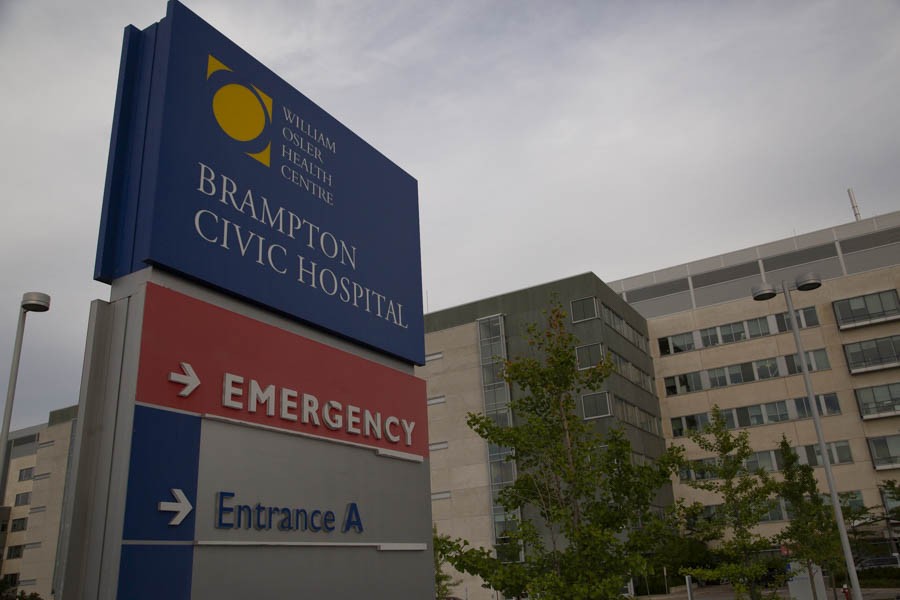
UPDATE: Peel hospitals get desperately needed reinforcements — region steadies itself for difficult month
Days after experiencing severe capacity issues, the health networks representing Brampton and Mississauga have added a significant number of critical care beds and ventilators which are crucial in the battle against COVID-19.
The news comes less than a week after Credit Valley Hospital in Mississauga reported more critical care patients than beds and the health network covering Brampton Civic reported a significant ventilator shortage.
In Peel Region, there have been a total of 557 positive cases of COVID-19 confirmed and eight deaths. In Mississauga there are 316 cases and 211 in Brampton, as of Monday morning’s updates from the Region.
As of April 5, Ontario had almost 4,000 ICU beds. These numbers include an original 2,012 across the province before the pandemic, not all of which had ventilators, and an extra 1,971 ICU beds with ventilators added as part of the emergency response to fight COVID-19.
The numbers are from daily statistics compiled by Critical Care Services Ontario (CCSO) which The Pointer has obtained.
Numbers from these reports previously showed Credit Valley hospital in Mississauga had 35 ICU patients but only 29 ICU beds and had only 12.5 percent of its ventilator capacity remaining as of April 1. They also revealed the health network covering Brampton was at negative 26.9 percent capacity for ventilators (read more here).
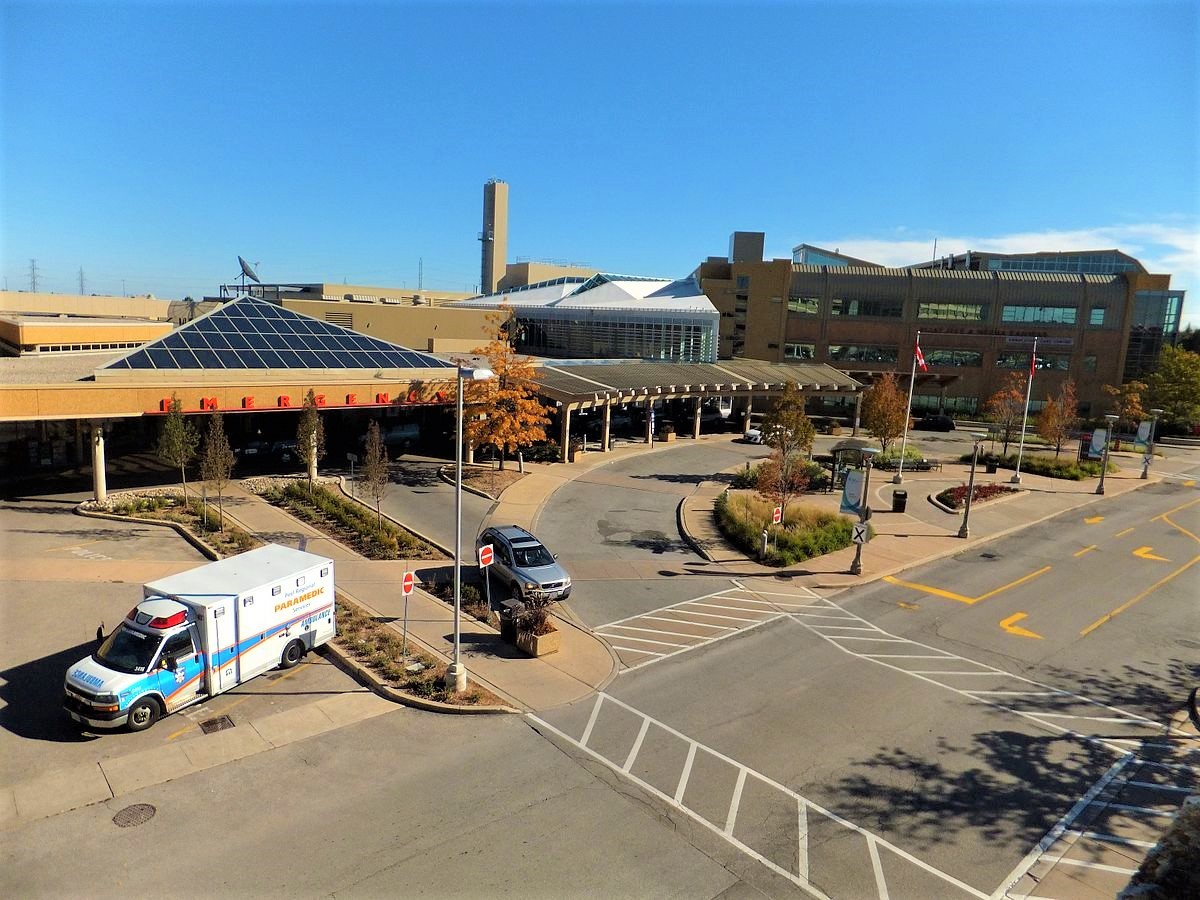
Credit Valley Hospital in Mississauga where an outbreak was reported last week when four patients in one unit tested positive for COVID-19
Now, new and updated figures, available through the end of the weekend, show significant improvement in both health networks, but do not offer per-hospital insights. The data is available by Local Health Integration Network, with Central West (L5:CW) covering Brampton and Mississauga Halton (L6:MH) responsible for the City of Mississauga.
CCSO data shows that, from April 4 onwards, Central West had 99 vented ICU beds, an increase of 73 from the start of the month. Mississauga Halton has added 46, taking its total to 162 vented ICU units as of April 5.
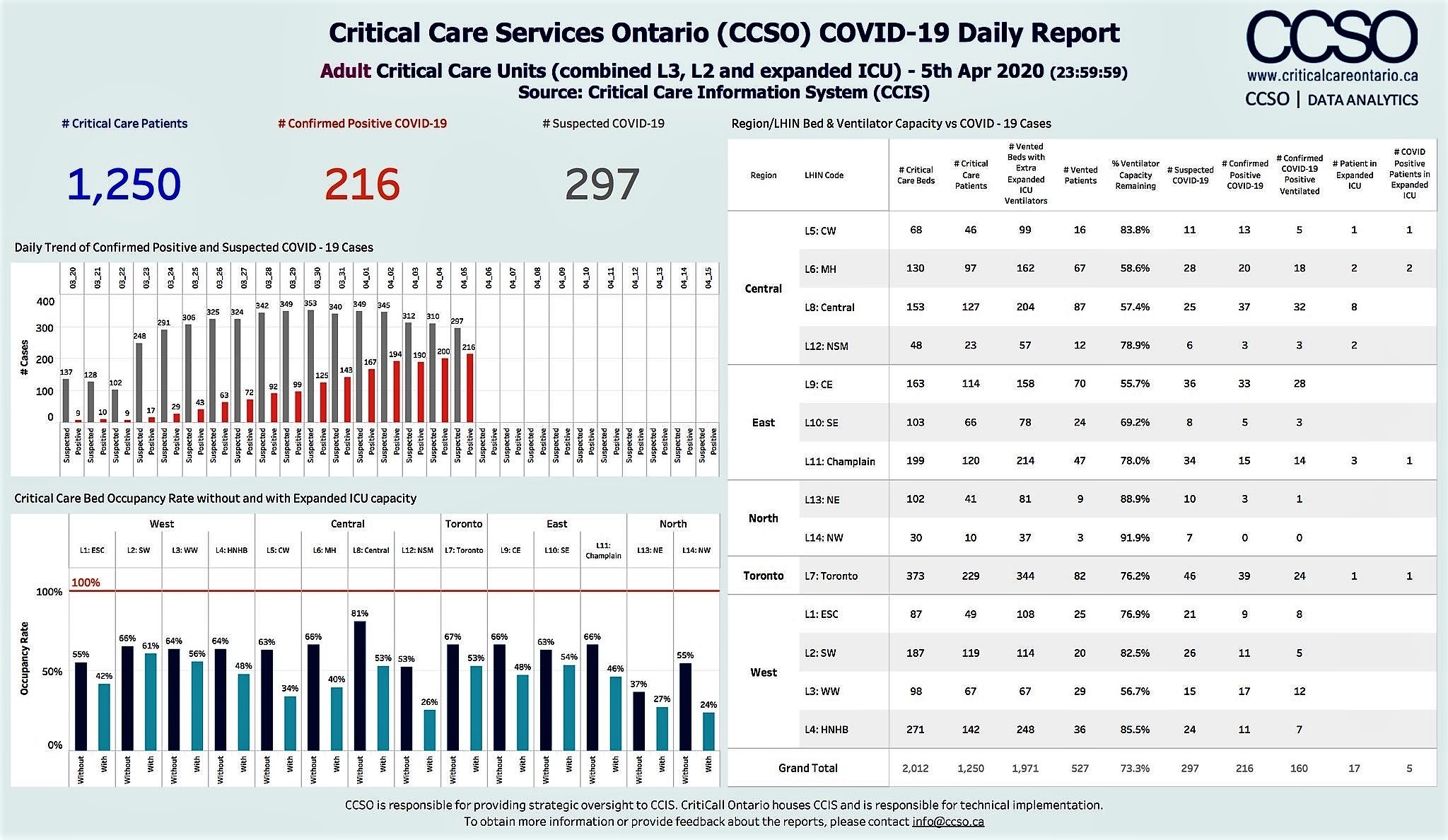
As a result, the capacity of the two health networks to treat critically ill patients who require ventilators has dramatically increased. In the fight against COVID-19 this is particularly important, with the novel coronavirus often attacking the lungs.
“It gets to be so severe that they really are not able to manage their own breathing in their own airway, ” Diane Feldman, a registered respiratory therapist and educator at the Lung Association, explained. The ventilator takes over the job of breathing for the patient, allowing their body to rest so it can recover from the disease, Feldman said.
Central West, with negative capacity at the start of the month, had 83.8 percent of its ventilators unoccupied as of April 5. To the south, Mississauga Halton has increased from 56 percent to 58.6 percent, leaving both health networks in a better position to cope with the COVID-19 crisis.
Central West specifically includes Orangeville, Brampton Civic, Peel Memorial (no in-patient beds), Etobicoke General and Shelburne. Mississauga Halton is responsible for Mississauga Hospital, Credit Valley Hospital, Queensway Health Centre in Etobicoke, Milton District Hospital, Oakville-Trafalgar and Georgetown and District Memorial Hospital.
Data from CCSO, compiled every day at 5 a.m., shows demand for ICUs and ventilators across the province. The information is sent to parties including the province’s COVID-19 Command Table, in charge of resource allocation, and senior doctors at hospitals. In Mississauga, those doctors work for Trillium Health Partners (THP) and in Brampton they are employed by William Osler.
Information from CCSO is not released to the public, and the numbers issued by the province are far less specific.
Despite assurances from Premier Doug Ford that the COVID-19 response would be transparent and information widely available, neither THP nor Osler currently release numbers detailing their COVID-19 statistics. Figures that would help shed light on the situation include ICU capacity, the number of critical care patients with the virus and the number of ventilators each hospital has at its disposal. The Government of Ontario releases this data daily, but does not break it down by region, city or hospital.
In contrast, health systems in Saskatchewan and British Columbia have been much more transparent. As an example, you can view the data from the Government of Saskatechewan here.
At the beginning of the pandemic, Brampton Civic had 24 ICU beds and Mississauga’s two hospitals had 100. Osler said a plan was in place to “expand” their capacity, but did not offer numbers, while THP told Mississauga City Council in March it had a roadmap to double capacity to 200 ICU beds.
Between April 1 and April 5 the number of patients under the care of Central West and Mississauga Halton also dropped. Central West had three fewer critical patients under its care on Sunday, with 46 in ICU and 16 on ventilators compared to 49 and 33 on Wednesday, April 1. For Mississauga Halton, the number of patients has dropped from 113 on April 1 to 97 in ICU on Sunday, although the number requiring ventilators has jumped from 51 to 67.
The reduction in ICU patients does not mean there are fewer patients with COVID-19. On April 1, 18 of the 35 patients in Credit Valley Hospital’s ICU had (or were suspected to have) COVID-19, meaning just under 50 percent of patients were in critical care for other reasons.
On Monday, the province reported a total of 589 people in hospitals across Ontario with COVID-19, 216 of them were in ICU and 160 were on ventilators.
The Pointer also obtained a map of ventilator occupancy by LHIN showing Central West now has one of the best rates in the province with only 16.2 percent of its ventilators in use as of April 5. Mississauga Halton is doing less well comparatively, with 41.4 percent of its ventilators occupied as of the same date, but still has signficant available capacity.
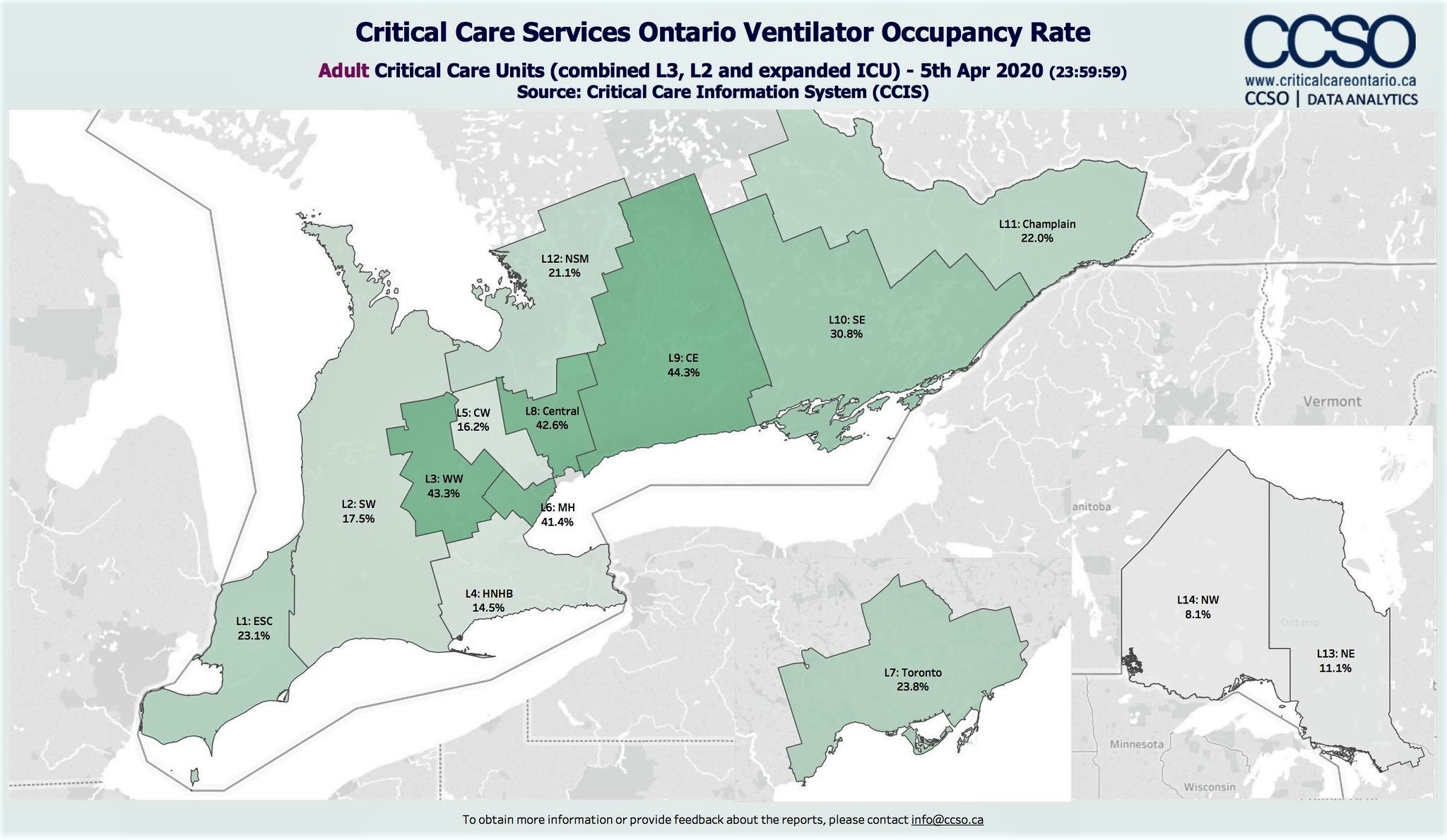
This data does not break down capacity by hospital, meaning the improved ventilator situation might not reflect the reality in the Mississauga and Brampton hospitals. The Pointer reached out to THP and Osler to find out how much of the improved capacity was in the two cities. Osler did not respond ahead of publication. Trillium replied but did not provide all the details.
No per-hospital data has yet been found for Brampton. The only confirmed information specific to Brampton Civic is its pre-pandemic total of 24 ICU beds.
In Mississauga, according to CCSO data obtained by The Pointer, the April 1 statistics shed some light on the situation at both the city’s hospitals. Of the 113 critical patients under the care of Mississauga Halton on the first of the month, 35 were at Credit Valley and 61 were at Mississauga Hospital. In total, 85 percent of all critical patients in the Mississauga Halton Local Health Integration Network were in Mississauga at the start of the month, with its hospitals accounting for 86 percent of the health network’s ICU beds.
In a tweet on Sunday, THP CEO Michelle DiEmanuele said that her hospitals have expanded their critical care capacity by 36 additional beds. She said the team is now looking “to phase two and creating more critical care capacity for Mississauga.” The tweet did not make clear the number of extra beds for the specific hospitals.
On Monday, a spokesperson for THP shared a media release from last week that stated: “The hospital [THP] will be adding 32 additional critical care spaces at our Credit Valley Hospital and Mississauga Hospital and will continue to pursue opportunities to expand,” but no breakdown for each hospital was provided.
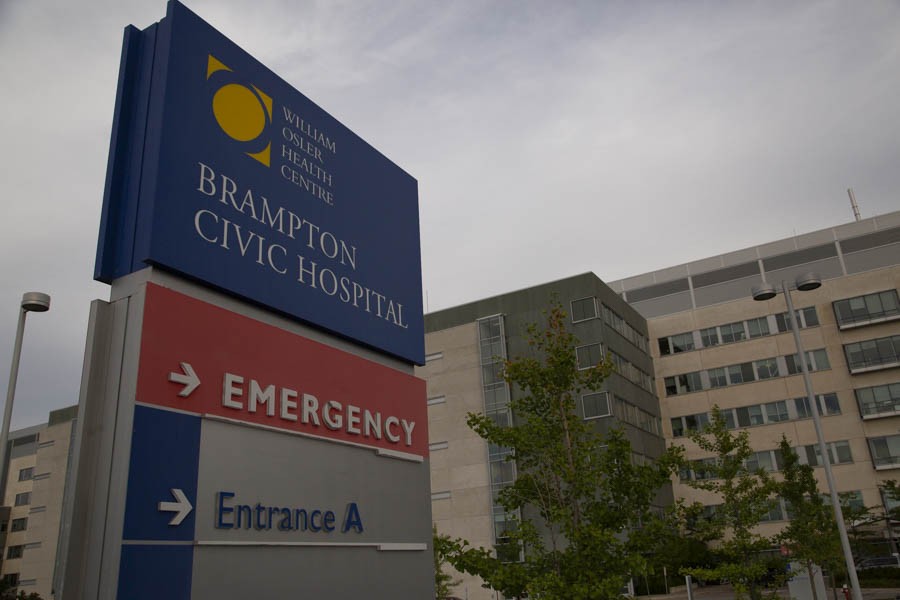
In Brampton, a triage intake tent has been erected to deal with an overflow from the emergency room at Civic Hospital, but no details have been shared of its COVID-19 expansion. Speaking to The Pointer on Friday, Donna Harris, Manager of Public Relations and Digital Media for William Osler, said Civic was waiting to take advantage of the provincial stockpile of ventilators to increase its capacity. Seven of a stockpile of 209 ventilators were stored in Brampton, according to Critical Care Ontario documents accurate to 2019.
“As part of a multi-stage surge plan, which has been a focus of the organization over the last number of weeks, we have undertaken a number of efforts to expand our capacity in critical care (ICU and CCU) at Brampton Civic Hospital and Etobicoke General Hospital,” Harris said. “These efforts include moving non-critical care patients to different areas of the hospital and actively pursuing relocation of chronically ventilated patients within Osler, or to chronic ventilator facilities in the community.”
The latest numbers from CCSO are good news for Brampton and Mississauga. The province as a whole appears to have bought itself vital time and capacity in its fight against the virus, with local capacity in Peel expanded at about the same rate of the whole province, on average.
Stark numbers released by the province Friday showed the battle against COVID-19 is just beginning. Projections suggest, with the measures in place prior to Saturday’s enhanced isolation measures (about 30 more business categories were added to the list of those that can no longer operate and a lot of non-essential industrial construction has been halted, as well as any new residential construction), 1,600 Ontarians could die from the virus by April 30, with as many as 80,000 cases by the same date.
Additional capacity in Peel’s health networks is a welcome enhancement, as the region enters a crucial phase that will determine the local impact of the pandemic. But THP and Osler will possibly need to find more ways to further expand ICU space and the number of ventilators they have available.
Email: [email protected]
Twitter: @isaaccallan
Tel: 647-561-4879
COVID-19 is impacting all Canadians. At a time when vital public information is needed by everyone, The Pointer has taken down our paywall on all stories relating to the pandemic to ensure every resident of Brampton and Mississauga has access to the facts. For those who are able, we encourage you to consider a subscription. This will help us report on important public interest issues the community needs to know about now more than ever. You can register for a 30-day free trial HERE. Thereafter, The Pointer will charge $10 a month and you can cancel any time right on the website. Thank you.
Submit a correction about this story


